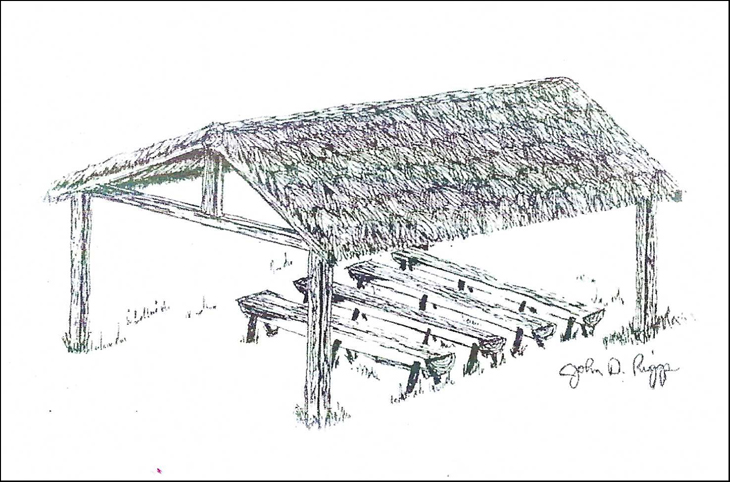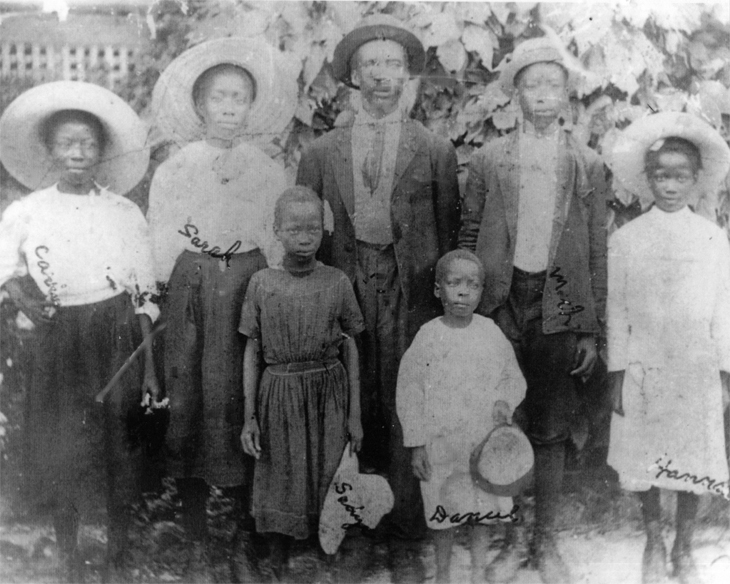Year
2023
Artist
Location
Baker Center School
311 E. Charlotte Avenue
Size
104′ w x 8.5′ h
Mural Creation Sponsors
2023:
Sushila Cherian
In Memory of Dr. JV Cherian
Congregational United Church of Christ
Kelly & Pete Gaylord
The Patterson Foundation
Saint Mary Baptist Church
In Memory of Pastor Isaac Thomas Jr
Community Foundation of Sarasota County
Shively Charitable Foundation
Lt. Col. Scot & Jill Shively
Penny Stiffler
The Community
Panel 2 – Religion
To listen to an audio presentation of the history captured in this panel, click on this video.
Daniel C. Smith Sr. was born in 1865 in Swainsboro, Georgia and his parents were former slaves. He ventured south at the age of 17 to Gainesville, Florida where he got a job working with the Florida Southern Railroad. He was 20 years old when he arrived in the town of Trabue as part of Gilchrist’s surveying crew. He, along with the other members of the crew, settled down in this new little town, increasing the town’s male population to 15 (8 white, 7 black).
He was deeply religious and in 1886, built a “brush arbor” where he organized the town’s first Afro-American religious services. It had a thatched roof made from palmetto fronds to provide shade from the sun and wooden benches for seating. These early services were interracial, attended by both blacks and whites.

He was also an early property owner, purchasing one of the first lots in town in 1887. Being a landowner but not yet registered to vote, he was not able to participate in the vote to incorporate the town and rename it Punta Gorda, as did four of his other survey crewman. But he did join the group to row across the harbor and walk the thirty miles north on that December 3rd, 1887 night to file the papers at the DeSoto County seat in Pine Level.
“In 1887, he [Dan Smith] was one of 21 from here, most of whom walked to Pine Level to register and be able to participate in incorporating the town which as is known was first called Trabue. On their trip to Pine Level, the then county seat of DeSoto county, the party had one ox-drawn cart on which five persons could ride at a time, some of them thus riding in shifts, others walking all the way there and back. The late Albert W. Gilchrist, afterwards governor of the state, headed the white folks; and Dan was leader of the colored folks.” (Punta Gorda Herald, Sept 28, 1939).
As one of the town’s original settlers, he was known to many as “Uncle Dan” and became a leader in the community. He became a trustee of the African Methodist Episcopal Church, now called Bethel A.M.E., and participated in the construction of the church’s first sanctuary in 1889 on land donated by Isaac Trabue. He donated money and labor on many civic projects benefitting the new town, including a drainage ditch he voluntarily dug along Marion Avenue running east from King Street (US41 North) to Cochran Street (now Dr. MLK Blvd.), and two wharves built along the harbor.
In 1896 he married Louisa Evans. He built a home for them on a small track of land he purchased just south of town on Burnt Store Road just off of Taylor Road. They had six children. Louisa died in 1911.

Dan died in 1935 at the age of 70 and is buried in the Lt. Carl Bailey Cemetery east of town.
Panel 2 of the new Local Black History mural pays tribute to Dan Smith, featuring him and what the brush arbor church service might have looked like back in the day.






 Support Provided by the Community Foundation of Sarasota County & the Shively Charitable Foundation
Support Provided by the Community Foundation of Sarasota County & the Shively Charitable Foundation